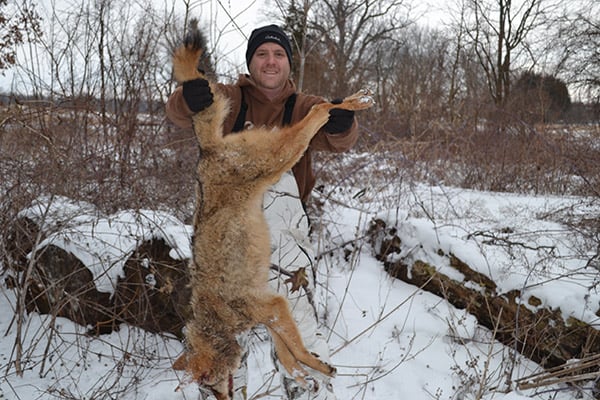
Last Updated on
I just about steeped on him. Thank God I didn’t. I had been daydreaming about something else while checking my trap line one day. Needless to say, the first ever coyote I ever caught in a trap caught me off guard!
I’ve been trying to trap coyotes for a few years now but just recently started to get it figured out. I’m by no means an expert, but here are some hard and fast rues to stick by that have helped me be successful. And before I go any further, be sure to check your state’s trapping rules because they are all different.
Why Trap?
Coyotes and other predators are terrorizing game animals across the nation. I got really tired of working hard in the spring to plant food plots, hanging tree stands in the sweltering heat, and watching deer on my cameras all summer. Then, always sometime mid October, my trail cameras started capturing lots of coyote pictures and the deer sightings would go down. I’d continue to see coyotes but no deer. That got old really quickly, so I decided to do something about it. I’ve heard that on average a mature coyote can and will kill about eight deer fawns each spring in the right circumstances. By that I mean that if the herd is already struggling, then many does won’t get bred the first time around in the fall.
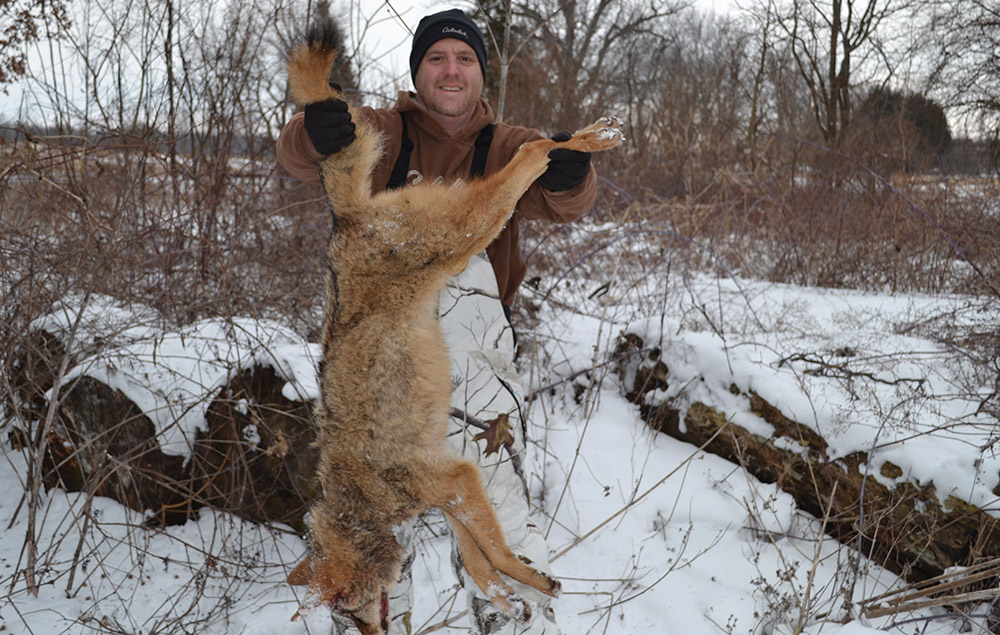
Fast forward to the spring when fawns could be born from April through June, and we have a steady supply of young deer for the coyotes to prey on over an extended period of time. In my home state of Michigan, our deer herd is really struggling. Our numbers are way off balance, and does are getting bred from October through December. Then, like I described, fawns are being born from April through June and getting gobbled up by coyotes. This becomes a perpetual cycle of low deer numbers and poor herd balance. So killing coyotes automatically helps the local deer herd, plus the turkeys, and the rabbits, and the squirrels, and the pheasants, and house pets, and…
Also, coyote pelts are one of the only furs on the market today that have done a pretty good job of retaining their value. I haven’t killed enough of them yet to want to sell pelts, but it’s an excuse. Plus, trapping is simply a lot of fun. It is a great reason to get outside and keep tabs on deer hunting properties in the off season. I also like to shed antler hunt and scout turkey property while I’m checking trap lines. Plus…my boys always want to tag along on a rabbit hunt whenever they get a chance. See where I’m going here? Trapping can be done in addition to a lot of winter activities.
Neck Snares
I’ve had my best luck with neck snares but I think it’s because I have a lot of them compared to the two leg holds I own. Where I live in Michigan, we have what we call a “Michigan Legal” snare with a deer stop on it. The deer stop prevents a deer’s leg from getting caught. It also releases tension on the animals neck when the animal stops struggling against it. Each state is different, so like I said earlier, be sure to check your laws very closely. We also need to have each trap tagged with personal info, and we need to check them every 24 hours. There are other rules, but these are the most important.
I like to find trails that the animals are using and “brush” them in. What I do is cut or collect a bunch of brush to make the trail much smaller. By making the trail smaller, if the coyotes are trying to travel on it, they can’t help but get snared. It works sort of like a funnel. Then, I’ll anchor a snare to a post, pound it into the ground, and set the snare. I like to set my snares about 6-10” off the ground, leaving a hole of about 10-12”. More often than not, trappers wire is necessary to get it to hang properly. Maybe I’ll hang a foot or two of wire off of a nearby branch and make a small hook on the end of it for the snare to hang on. No two sets are exactly alike, but one thing is certain, I can almost guarantee needing trappers wire.
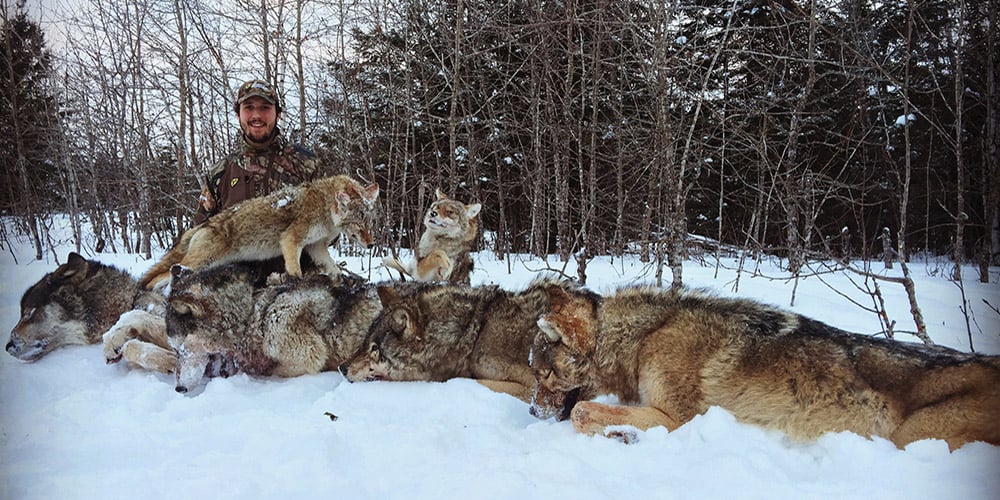
Often a deer or other animal will come by and trip the snare, knocking it over on the ground. When that happens, I simply reset it. If it keeps happening on the same spot, I may move it or brush it in tighter.
Leg Holds
Leg hold traps also need to be anchored in tightly and tagged as well. There are a few ways to set up leg holds. Once again, be sure to check regulations! Most people dig a hole set, where they put some sort of lure or bait in a small hole that is up against a backdrop of some sort. For instance, a big dead log would be a good backdrop. The backdrop forces the animal to only approach the site from one direction. Then, the trapper will dig a few shallow holes for the traps to sit in. The idea is that when the animals comes to investigate, they wont see the traps and will step right in them. If the trap is big enough and working properly, it will hold the animal until the trapper returns. A pipe set works well too. A pipe set is where a guy will pound 8 or 10” of thin PVC pipe into the ground. Then, he’ll fill the pipe with lure or bait. The principal is the same, get them curious and get them to walk close. Some other people also put leg holds and snares for that matter around bait such as road kills and old rib cages and such.
Many seasoned trappers will gather good clean trap dirt in the summer and store it in a bucket then, after they set their leg hold traps, they’ll sift a small amount of the unscented dirt over the trap. Other less organized trappers (like myself) will cover them with fine bits of grass and pine needles, etc…
Odds and Ends
Trapping really is a lot of fun. I personally am a scent control freak, so on all of my traps and anywhere I touch, I liberally spray ScentBlocker Trinity Blast spray. Other guys strictly wear rubber boots and gloves. Some boil their traps in wax to remain scent fee, others let them rust up as much as possible to not shine or carry scent. If the trap is new, there are also dyes that can be purchased or made from walnut husks which will stain the traps a nice dark brown. One thing in certain though, don’t place a new shiny oiled trap out and expect results. Get that thing dirty and brown and scent free before using.
I always tell neighbors when I’m trapping a certain area because I don’t want to get their dogs or cats. That being said, accidents do happen. I like to carry a big thick blanket for just such an occasion. The blanket can be used to throw over the pet, and help keep it comfortable while the trap is released, or the snare is cut. I would recommend removing an animal with the help from someone else, don’t try it alone.
I’ve also earned hunting rights by trapping coyotes for people. It is a great way to get a foot in the door and build friendships. Nobody has ever told me NO when I have asked to help get rid of their coyote problem. In fact, I know guys who charge to come get rid of them. And… they sell the furs! Talk about a lucrative business.
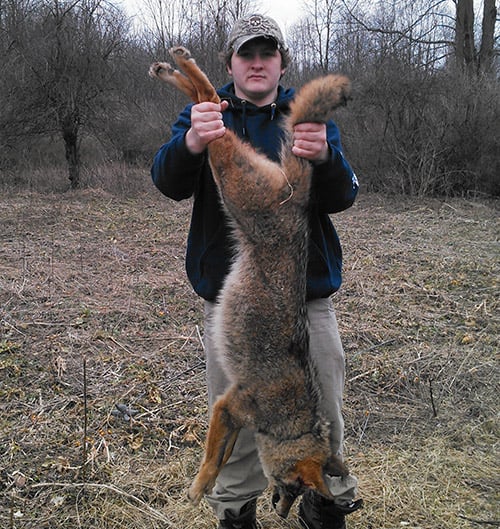
When I do have a coyote trapped I try to kill it as quickly and humanely as possible. I like to put a .22 LR right between their eyes. Some guy shoot them in the lungs, that certainly works too. One thing that can be agreed upon though is that trapping is a big commitment. If you can’t check traps each day- then don’t set them. Some guys set weekend sets on a Friday after work and putt them each Sunday afternoon.
As always be safe and have fun. And give coyote trapping a try. The internet is full of great trapping articles and videos. Also, be sure you now what you will do with the animal once you have gotten one. I believe if you stay at it long enough and learn from your mistakes, you will start to regularly trap coyotes. Who knows, your newest hobby could end up becoming a nice side job.

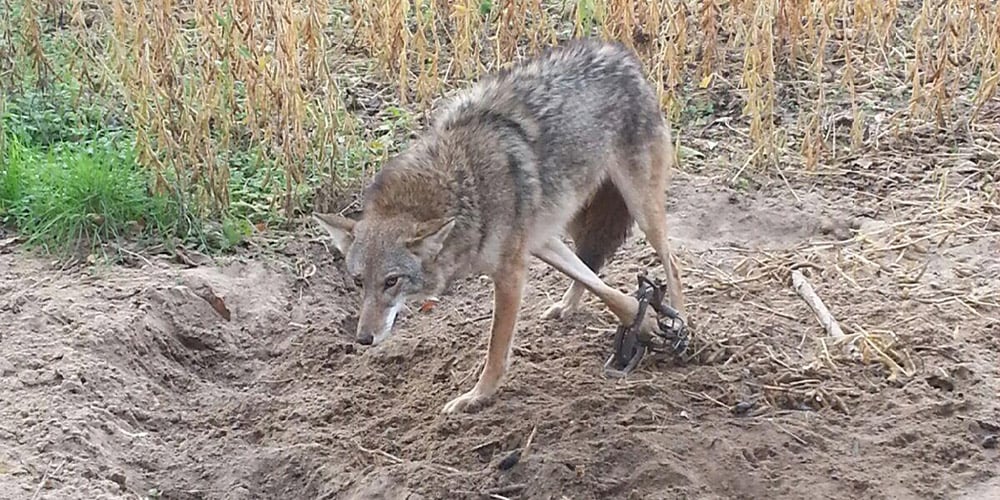



Leave a Reply